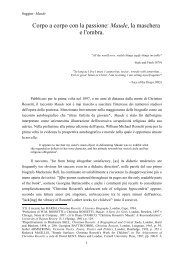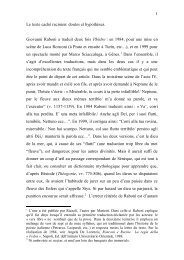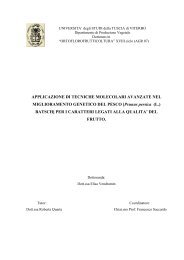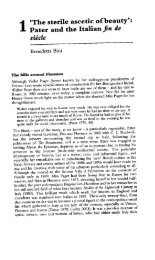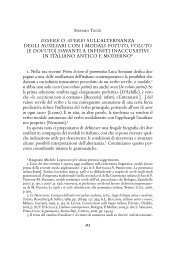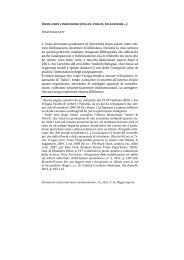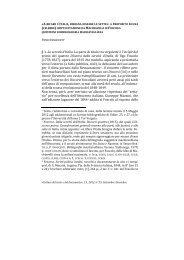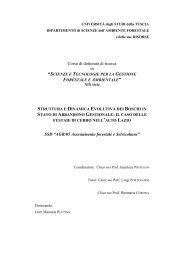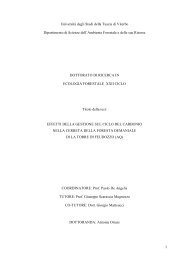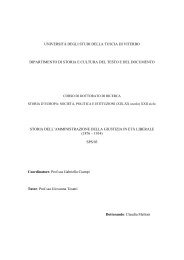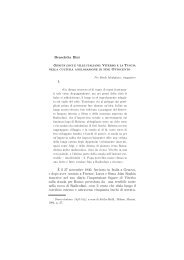drivers of soil respiration of root and microbial ... - Unitus DSpace
drivers of soil respiration of root and microbial ... - Unitus DSpace
drivers of soil respiration of root and microbial ... - Unitus DSpace
Create successful ePaper yourself
Turn your PDF publications into a flip-book with our unique Google optimized e-Paper software.
elax <strong>of</strong> the <strong>microbial</strong> community in terms <strong>of</strong> C gaining <strong>and</strong> C mineralization activity as other easily<br />
available C substrates were present in the <strong>soil</strong>. This was confirmed by the results <strong>of</strong> Cext (a labile<br />
source <strong>of</strong> soluble C) measured just after the mowing in June <strong>and</strong> four months after the mowing in<br />
October (see below).<br />
Numerous studies have observed increases in <strong>soil</strong> CO2 efflux in response to warming<br />
(Peterjohn et al., 1994; Rustad et al., 2001; Melillo et al., 2002; Niinisto et al., 2004; Zhou et al.,<br />
2007). The warming-induced response <strong>of</strong> <strong>soil</strong> <strong>respiration</strong> may be regulated by acclimatization <strong>of</strong><br />
<strong>respiration</strong> (Luo et al., 2001), phenological <strong>and</strong> physiological adjustments <strong>of</strong> plants <strong>and</strong> microbes<br />
(Melillo et al., 2002), extension <strong>of</strong> growing season (Dunne et al., 2003; Wan et al., 2005, Zhou et<br />
al., 2007), changes in net N mineralization (Wan et al., 2005) <strong>and</strong> stimulation <strong>of</strong> C4 plant<br />
productivity (Wan et al., 2005). Our study showed that warming <strong>of</strong> the defoliated <strong>soil</strong> significantly<br />
increased <strong>respiration</strong> <strong>of</strong> <strong>microbial</strong> origin, resulting in an increase <strong>of</strong> the total CO2 efflux from <strong>soil</strong>.<br />
These increase likely resulted from enhanced oxidation <strong>of</strong> <strong>soil</strong> C compounds in warmed plots for<br />
<strong>microbial</strong>-derived <strong>respiration</strong> <strong>and</strong> possibly for the <strong>microbial</strong> component <strong>of</strong> rhizo<strong>microbial</strong><br />
<strong>respiration</strong> (<strong>root</strong>-derived one). Warming <strong>of</strong> the managed <strong>soil</strong> cancelled the effect <strong>of</strong> defoliation <strong>and</strong><br />
resulted in the absence <strong>of</strong> difference in the cumulative <strong>soil</strong> <strong>respiration</strong> <strong>and</strong> its components between<br />
treatments.<br />
It was not possible to account for the dynamics in <strong>root</strong>-derived <strong>respiration</strong> at common<br />
physical environmental conditions in MG <strong>and</strong> UM plots as this component <strong>of</strong> <strong>soil</strong> CO2 efflux was<br />
not related to changes in <strong>soil</strong> temperature (Fig. 6). It is clear that temperature sensitivity <strong>of</strong> <strong>root</strong>-<br />
derived <strong>respiration</strong> at the non-limited SWC was modified by treatment. In UM plots an obvious<br />
exponential increase <strong>of</strong> <strong>root</strong>-derived <strong>respiration</strong> with a high Q10 values was registrated, whereas in<br />
plots subjected to defoliation practice the Q10 was reduced considerably (p




